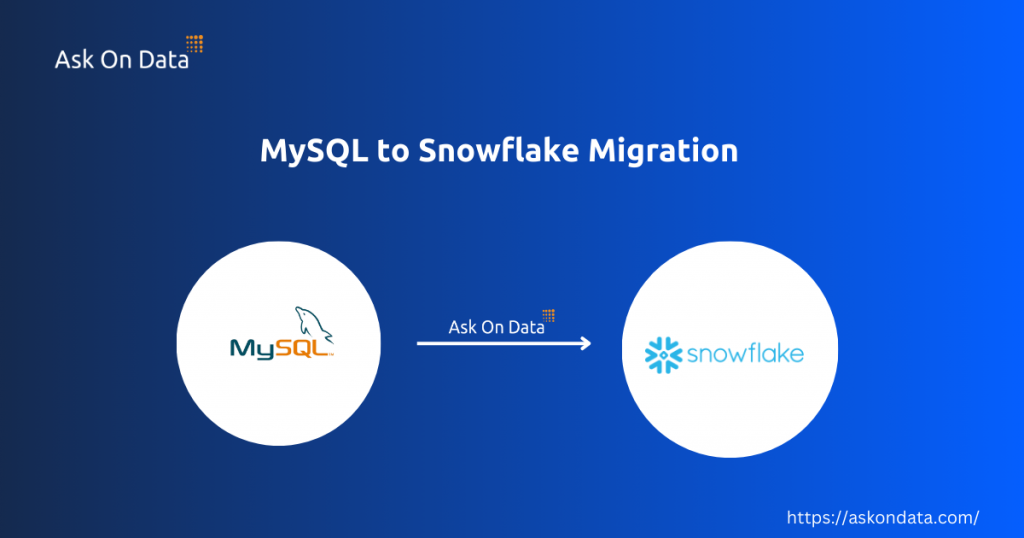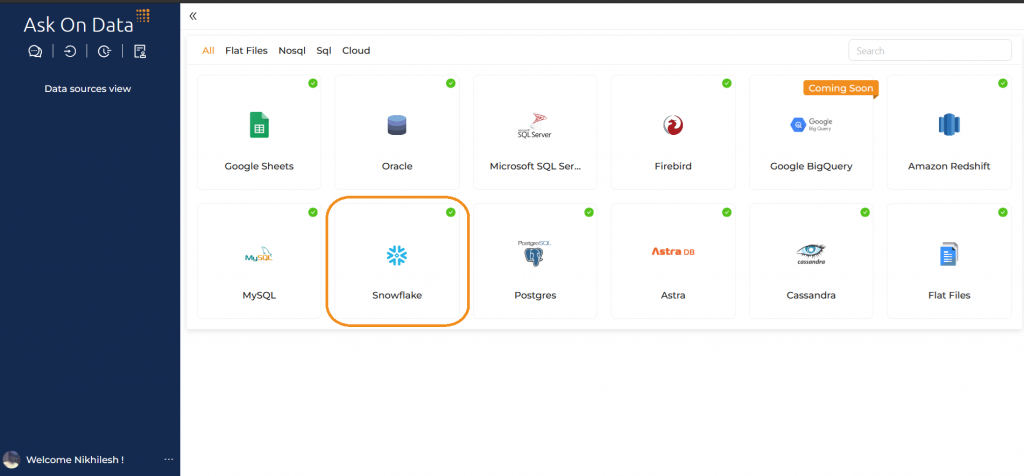
In this article, we dive into the intricacies of MySQL to Snowflake Migration, covering everything from an introduction and key advantages to detailed migration methods. Discover the key differences and seamless strategies for a successful transition to Snowflake.
Migrating from MySQL to Snowflake unlocks enhanced scalability, performance, and flexibility for your data operations. This transition streamlines complex queries, optimizes storage, and leverages Snowflake’s advanced data warehousing capabilities. Embrace a seamless migration to future-proof your data infrastructure and accelerate analytics-driven decision-making.
What is MySql
MySQL is an open-source relational database management system known for its reliability and performance. It is widely used to manage and organize structured data efficiently. In data migration, MySQL serves as a common source or destination, enabling seamless transfer and integration of data across various platforms. Its flexibility and compatibility ensure smooth migration processes.
What is Snowflake
Snowflake is a cloud-based data warehousing platform that offers high performance, scalability, and advanced analytics capabilities. It supports seamless data storage and processing with its unique architecture. In data migration, Snowflake excels as a target destination, providing efficient data integration and transformation. Its robust infrastructure ensures quick, reliable migration while enhancing data accessibility and analytics.
Advantages of MySQL to Snowflake Migration
- Enhanced Scalability: Snowflake’s cloud-native architecture allows for effortless scaling to handle large volumes of data without compromising performance.
- Improved Performance: Snowflake’s advanced query optimization and data processing capabilities ensure faster execution of complex queries.
- Seamless Data Integration: Snowflake supports diverse data formats and integrates smoothly with various data sources, simplifying the migration process.
- Advanced Analytics: Leverage Snowflake’s robust analytics tools to gain deeper insights and drive data-driven decisions.
- Enhanced Security: Benefit from Snowflake’s comprehensive security features, including data encryption, multi-factor authentication, and robust access controls.
Method 1: Migrating Data from MySQL to Snowflake Using the Manual Method
- Export Data from MySQL: Use MySQL Workbench or mysqldump to export data tables to CSV files.
- Upload to Cloud Storage: Transfer the CSV files to a cloud storage service like AWS S3, Google Cloud Storage, or Azure Blob Storage.
- Create Snowflake Tables: Define and create the necessary database and tables in Snowflake to match the MySQL schema.
- Load Data into Snowflake: Use Snowflake’s COPY INTO command to load data from the cloud storage into Snowflake tables and validate the data.
Disadvantages of Migrating Data from MySQL to Snowflake Using the Manual Method
- High Error Risk with lot of manual efforts
- Difficult in achieving Data Transformation
- Dependency on tech resources
- No Automation
- Limited Scalability
- For every table, this work has to be done.
- No automated methods of handling errors, notifications
- No automated methods of roll back in case
- No automated direct methods of logs and knowing amount of data transferred
- No automated direct methods in case if you would like to have methods like incremental load (Change Data Capture)
Method 2: Migrating Data from MySQL to Snowflake Using ETL Tools
- Automation of Data Migration: ETL tools automate the entire process, reducing the risk of human error and saving significant time.
- Schema Mapping Simplification: Built-in connectors and transformation functions handle schema differences between Firebird and Snowflake automatically.
- Incremental Data Loads: ETL tools allow for scheduled data loads and incremental updates, ensuring the migration process is continuous and up-to-date.
- Real-Time Monitoring: These tools provide monitoring dashboards to track the progress of the migration and alert users to any issues.
- Scalability: ETL tools scale effortlessly to handle large data volumes, providing consistent performance without manual intervention.
- Inbuilt functionalities which are present to handle functionalities like logging, notification, error handling,
- Inbuilt functionalities for notifications via email etc.
- Functionalities for monitoring various stats like data transferred, DQ DC etc.
Challenges of Using ETL Tools for Data Migration
- Complex Setup: Initial configuration of ETL tools can be complex and time-consuming, requiring technical expertise and thorough understanding of both source and target systems.
- Data Transformation Issues: Ensuring proper data transformation can be challenging, especially with complex data structures or inconsistent data formats, potentially leading to data quality issues.
- Performance Limitations: ETL tools may experience performance bottlenecks when handling large volumes of data, affecting migration speed and efficiency.
- Cost Considerations: Many ETL tools come with licensing fees or usage costs that can increase significantly with the volume of data, impacting budget constraints.
- Dependency on Third-Party Tools: Relying on external ETL tools may introduce risks related to tool reliability, vendor support, and compatibility with future updates of source or target systems.
Why Ask On Data is the Best Tool for Migrating Data from MySQL to Snowflake
- User-Friendly Interface: Ask On Data offers an intuitive interface that simplifies the migration process, making it easy for users of all skill levels.
- Seamless Integration: The tool connects smoothly with both MySQL and Snowflake, ensuring a hassle-free data transfer without complicated setups.
- Automated Data Transformation: It automatically transforms and cleans your data, reducing the risk of errors and saving you time during migration.
- Real-Time Monitoring: Ask On Data provides real-time monitoring of the migration process, allowing you to track progress and quickly address any issues.
- Cost-Effective Solution: With a flexible pricing model, Ask On Data helps you manage migration costs without sacrificing quality or performance.
Usage of Ask On Data : A chat based AI powered Data Engineering Tool
Ask On Data is world’s first chat based AI powered data engineering tool. It is present as a free open source version as well as paid version. In free open source version, you can download from Github and deploy on your own servers, whereas with enterprise version, you can use AskOnData as a managed service.
Advantages of using Ask On Data
- Built using advanced AI and LLM, hence there is no learning curve.
- Simply type and you can do the required transformations like cleaning, wrangling, transformations and loading
- No dependence on technical resources
- Super fast to implement (at the speed of typing)
- No technical knowledge required to use
Below are the steps to do the data migration activity
Step 1: Connect to MySQL (which acts as source)

Step 2 : Connect to Snowflake (which acts as target)

Step 3: Create a new job. Select your source MySQL and select which all tables you would like to migrate.
Step 4 (OPTIONAL): If you would like to do any other tasks like data type conversion, data cleaning, transformations, calculations those also you can instruct to do in natural English. NO knowledge of SQL or python or spark etc required.
Step 5: Orchestrate/schedule this. While scheduling you can run it as one time load, or change data capture or truncate and load etc.
For more advanced users, Ask On Data is also providing options to write SQL, edit YAML, write PySpark code etc.
There are other functionalities like error logging, notifications, monitoring, logs etc which can provide more information like the amount of data transferred, logs, any error information if the job did not run and other kind of monitoring information etc.
Trying Ask On Data
You can reach out to us on support@askondata.com for a demo, POC, discussion and further pricing information. You can make use of our managed services or you can also download and install on your own servers our community edition from Github.
